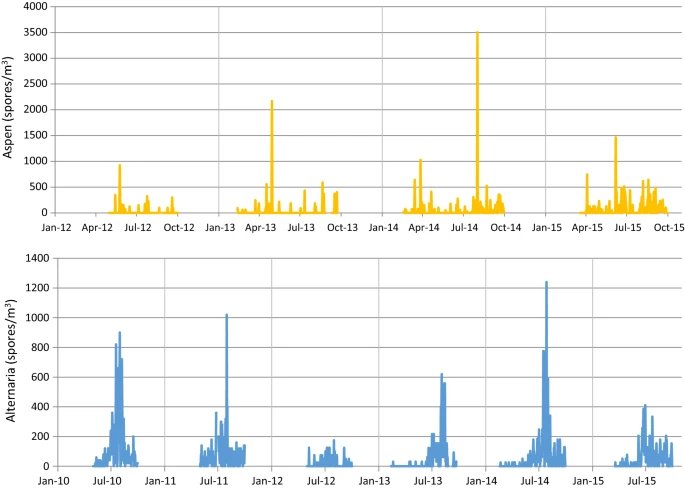Clinical and Translational Allergy
Letter to the Editor – Open Access
D. M. Caillaud, S. Martin, C. Ségala, N. Dupuy, M. Thibaudon & D. Muti
Clinical and Translational Allergy volume 9, Article number: 56 (2019)
Background
Temporal ecological studies have shown that outdoor moulds are associated with severe asthma exacerbations, as emergency department visits or hospitalisations. The aim of this was to assess the associations between daily sales of short-acting β2-agonists (SABA), a specific and frequent treatment for control of mild asthma exacerbations in children and young adults, and outdoor mould concentrations in the central France area over a 5 year period.
Methods
The relationship between daily changes in mould (25 species) concentrations and daily SABA sales within a population of patients aged 6 to 39 years in a middle-size town of central France (approximately 127,000) was obtained from social security database and analysed with generalized additive models, taking into account confounding factors (air pollution, weather conditions, pollen counts and trend).
Results

Daily SABA sales (mean, SD) rose from 17.3 (9.7) in 2010 to 22.7 (12) in 2015. The relative risk (RR [95% CI]) of SABA sales associated with an interquartile increase in mould concentration was significant in the whole population for Alternaria 1.06 [1.002–1.12]. When the influence of age and sex was accounted for, the relationship was significant only in 6–12 years old males for Alternaria 1.21 [1.04–1.41] and Aspergillus–Penicillium 1.08 [1.04–1.12].
Conclusions
Daily SABA sales are positively associated with Alternaria spores in the general population of children and young adults. The association between daily SABA sales and temporal changes to Alternaria and Aspergillus–Penicillium in male children indicate that outdoor moulds contribute to asthma morbidity.
